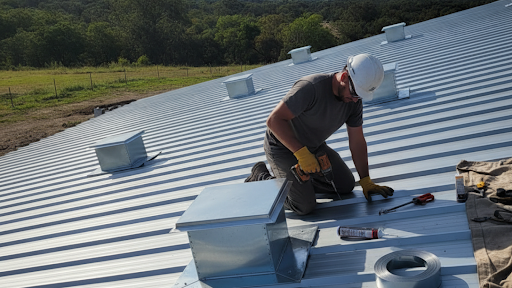When it comes to maintaining your metal roof, one factor that’s often overlooked is air movement.
You might be wondering how to vent a metal roof to ensure it lasts longer and performs better. The truth is, proper ventilation is crucial to the overall health of your roof and your home’s energy efficiency.
Let’s explore how airflow impacts your metal roof’s durability and energy savings.
The Importance Of Ventilation For Metal Roofs
Metal roofs are known for their strength and durability, but they need adequate ventilation to function at their best. Without it, your roof could suffer from problems like moisture buildup, condensation, and heat stress.
Why Does Air Movement Matter?
Air movement helps regulate the temperature inside your attic, which directly affects your roof. Without enough airflow, hot air and moisture can get trapped under the roof, leading to potential damage over time.
- Temperature Regulation: Proper ventilation ensures that warm air doesn’t get trapped, reducing the chance of overheating and subsequent damage to roofing materials.
- Moisture Control: Without good airflow, moisture can accumulate, causing rust, mold, and even wood rot in the structure beneath the metal roof.
- Prevention of Ice Dams: In colder climates, poor air circulation can lead to ice dams forming, which can cause water to back up under the shingles.
Now that you know its importance, the question is how to vent a metal roof.
The answer is: To properly vent a metal roof, install continuous eave vents along with a ridge vent system to ensure optimal airflow and minimize moisture buildup.
Benefits Of Proper Ventilation For Energy Savings
Now, let’s talk about energy savings. Proper ventilation can help keep your home cool in summer and warm in winter. How does it work? It all comes down to airflow that helps regulate your attic’s temperature.
In the Summer
- In summer, a poorly ventilated attic traps heat, making your home hot.
- This forces your air conditioner to work harder, increasing energy use.
- Installing roof vents improves airflow, removing hot air from the attic.
- A cooler attic reduces strain on your AC and lowers energy bills.
In the Winter
- A well-ventilated roof prevents ice dams and moisture buildup in winter.
- Cold air flows through the attic, helping maintain a stable temperature.
- Helps prevent issues like frozen pipes or leaks from melting snow.
- Reduces the need for artificial heating, leading to energy savings.
How To Vent A Metal Roof For Maximum Efficiency
If you’re wondering how to vent a metal roof, it all comes down to the strategic placement of vents. The most common types of roof vents include:
- Ridge Vents: Installed along the roof’s peak, these vents allow hot air to escape easily.
- Soffit Vents: Positioned along the roofline, these vents allow cooler air to enter, promoting proper airflow throughout the attic.
- Gable Vents: Located at the gable ends of the roof, these vents provide additional air circulation.
- Static Roof Vents: These vents are fixed and allow warm air to escape without any mechanical assistance.
By ensuring your roof has a mix of intake and exhaust vents, you allow air to move freely and prevent temperature buildup under the roof.
Final Thought
Proper ventilation plays a critical role in enhancing both the durability and energy efficiency of your metal roof. By taking the time to understand how to vent a metal roof, you ensure your roof stays in top shape for years, saving you money on repairs and energy costs.
The right air movement helps prevent issues like moisture buildup, rust, and excessive heat, giving you a roof that not only lasts longer but also keeps your home comfortable year-round.
For More Information Visit Us: https://thecreativemines.com/




